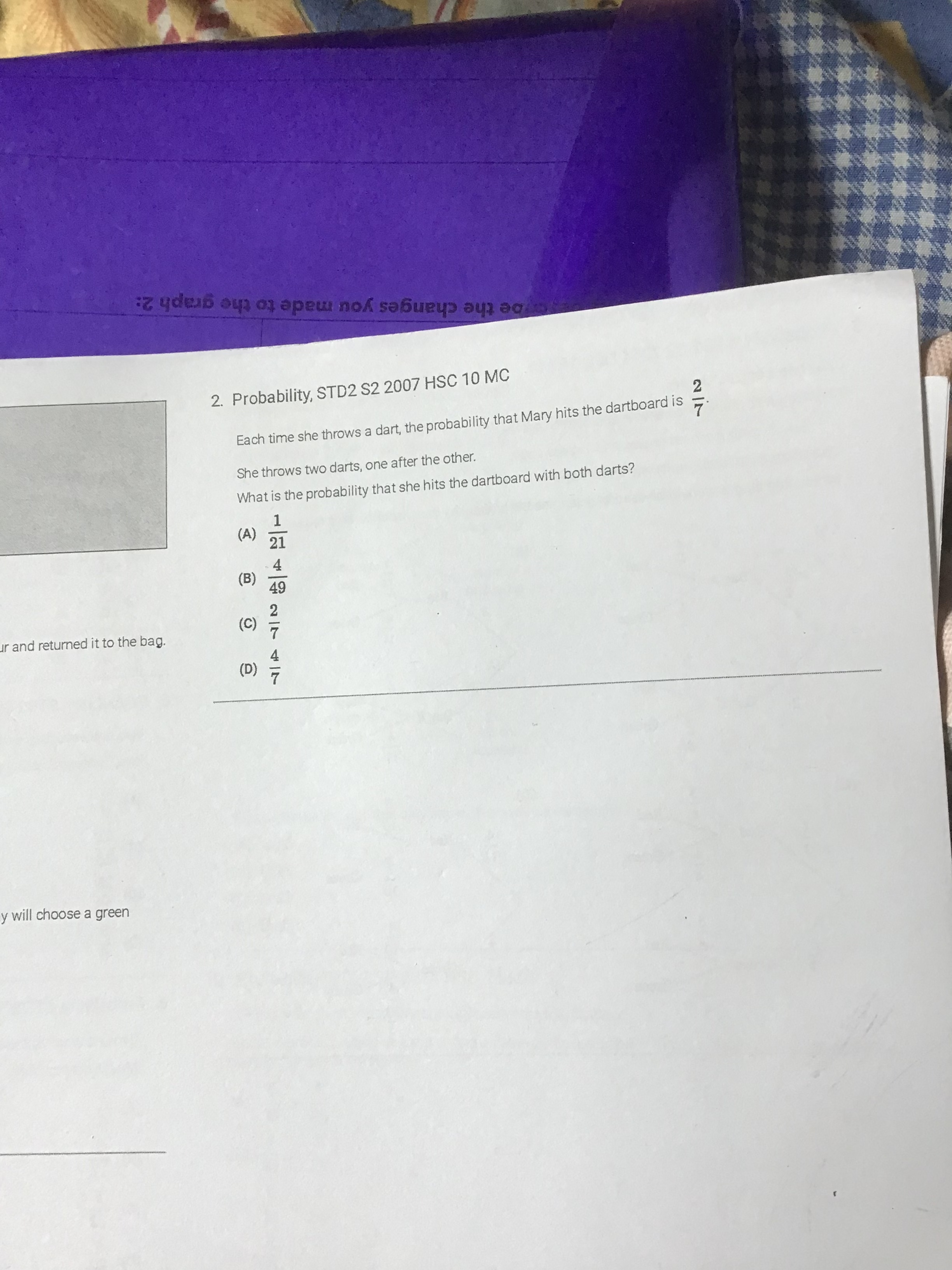AI tutor
Welcome to Bytelearn!
Let’s check out your problem:

Each time she throws a dart, the probability that Mary hits the dartboard is .She throws two darts, one after the other.What is the probability that she hits the dartboard with both darts?(A) (B) (C) (D)
Full solution
Q. Each time she throws a dart, the probability that Mary hits the dartboard is .She throws two darts, one after the other.What is the probability that she hits the dartboard with both darts?(A) (B) (C) (D)
- Multiply probabilities: Since the events are independent, multiply the probability of hitting the dartboard on the first throw by the probability of hitting it on the second throw.
- Substitute given probabilities: Substitute the given probability for each dart.
- Calculate product: Calculate the product.
- Check answer choices: Check the answer choices to match the calculated probability.The correct answer is (B) .
More problems from Find probabilities using the addition rule
QuestionGet tutor help
QuestionGet tutor help
QuestionGet tutor help
QuestionGet tutor help
QuestionGet tutor help
QuestionGet tutor help
QuestionGet tutor help
QuestionGet tutor help
QuestionGet tutor help
